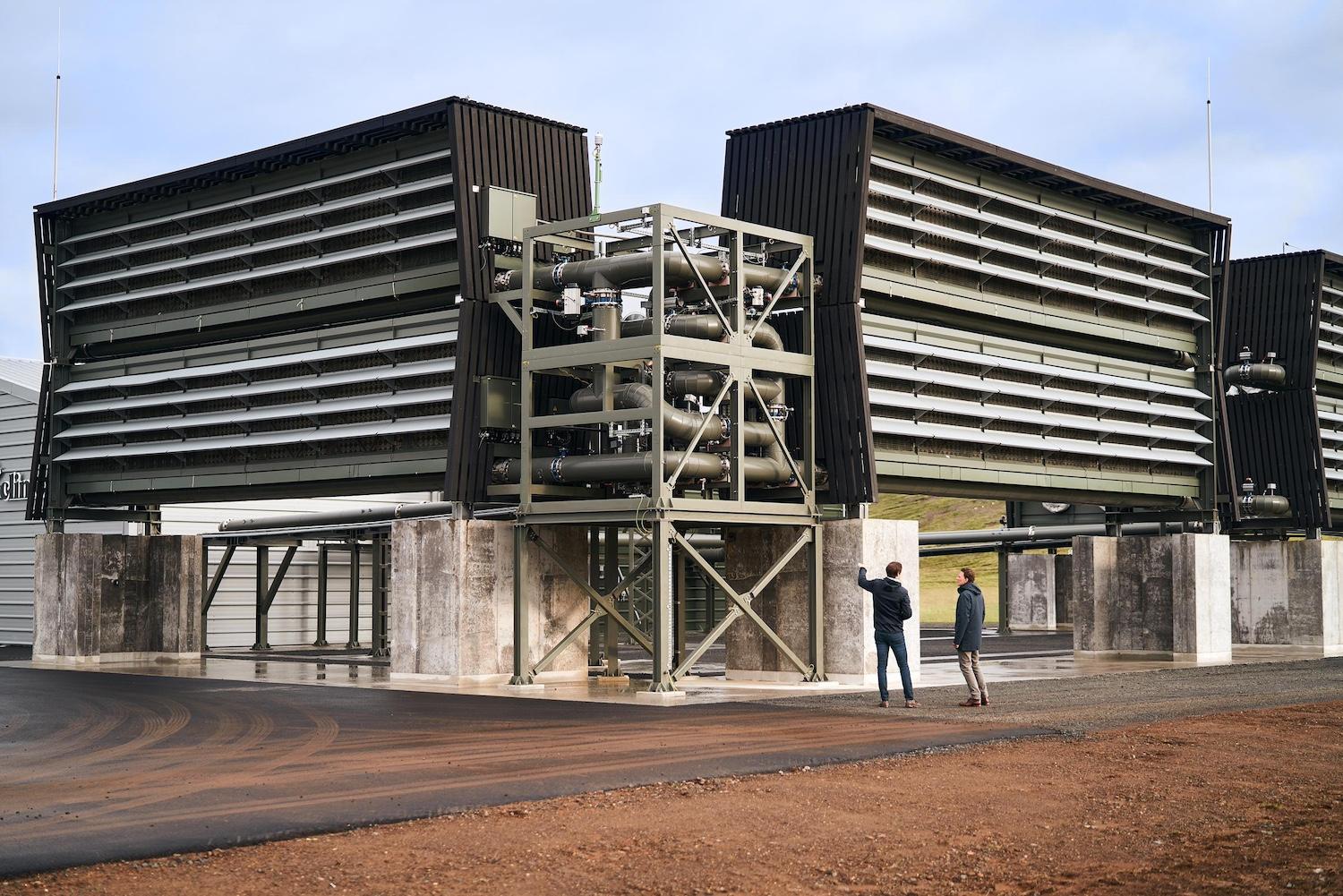
A carbon collection tower at Climeworks' Orca plant in Iceland. (Image: Climeworks)
With the right technology, carbon can be transformed into profitable end products and services that create jobs and support local economies — a win-win for the environment and the economy.
Carbon-to-value technologies use carbon dioxide to create valuable products for carbon-intensive industries, and they’re attracting global interest from profit-focused investors. As a result, there’s been an uptick in startups focused on carbon conversion, or the reuse of carbon as an end product or a component of new materials, representing a critical transition for the industry. Essentially, we’re creating a pathway that enables the conversion of captured carbon into fuels, chemicals, building materials, plastics, food, medical products, cosmetics and more — turning a harmful chemical compound into economic value.
Looking at available technologies to capture excess carbon, the industry has seen a scale-up of solutions such as carbon capture and storage and direct air capture. These processes can mitigate climate change and environmental impacts by either capturing carbon from the atmosphere or preventing entry into the atmosphere altogether and storing it.
Point-source carbon capture technologies stop carbon dioxide at the source. Companies like Climeworks can remove carbon dioxide from the air through direct air capture and storage technologies. The captured carbon is then processed and safely stored deep underground where it mineralizes and can be contained for thousands of years.
In comparison, carbon capture and utilization has the potential to help prevent and reduce atmospheric carbon while also finding lucrative uses for the captured carbon. These technologies will capture or store carbon, and utilization locks it away in new, economically viable products -— contributing to reducing greenhouse gas emissions and fostering a circular economy where carbon becomes a valuable asset.
Technologies that mineralize and convert captured carbon dioxide into profitable, high-value products are particularly promising because they are carbon neutral, have an ultra-low energy penalty and serve large global markets. For example, CarbonFree Chemicals’ patented technologies capture carbon dioxide from emitters and transform it into carbon-neutral chemicals such as baking soda, precipitated calcium carbonate and hydrochloric acid. Continuing with the momentum across the industry, CarbonFree recently announced a partnership with U.S. Steel to deploy its SkyCycle platform at U.S. Steel’s plant in Gary, Indiana, its largest facility in North America.
Capturing carbon’s potential
The momentum behind carbon storage and utilization efforts started in 2017 when the U.S. Department of Energy Bioenergy Technologies Office (BETO) introduced the idea of carbon emissions as a carbon feedstock at the Engineered Carbon Reduction Listening Day.
“Feedstocks are materials used directly in manufacturing processes and transformed into an intermediate or finished material,” according to the U.S. Office of Energy Efficiency and Renewable Energy. For many decades, the chemical industry has used fossil-fuel-derived feedstocks like natural gas to manufacture building block chemicals, such as ethylene and propylene, which are used to produce everything from plastics to fertilizer.
When carbon dioxide is captured and used as a building block for useful products such as concrete, plastics, carbonated drinks or fuel for cars, we reduce reliance on fossil fuels while limiting carbon emissions. The value here lies in creating products that provide economic value while slowing climate change.
The predicted market potential is enormous. The addressable market of “carbon tech” companies totals $1 trillion annually in the U.S. and $5.9 trillion globally, according to Carbon 180.
The three most promising product areas that could utilize captured carbon dioxide are fuels, chemicals and building materials. Despite the broad range of possible end products, these three sectors will likely have the largest addressable markets and, thus far, have been the most active.
The challenge? Public acceptance
One of the major challenges to the carbon-to-value movement is the public’s acceptance of products, such as carbonated water, created from carbon captured from a power plant's smokestack.
Approximately 69 percent of consumers were open to carbon capture and utilization-based products, according to a study completed in 2021. We expect favorability to continue to rise as carbon-based products become more popular, but there are a few things to keep in mind while that happens.
Carbon use, or reuse, is needed in addition to carbon reduction. More than emissions reductions are required to limit global temperature rise to 1.5 degrees Celsius, according to the Intergovernmental Panel on Climate Change. Ultimately, the end goal should be to reduce our carbon footprint, so there’s less of it to deal with. Combining carbon conversion technologies with carbon reduction initiatives will result in the best long-term outcome.
Useful products are not the only benefit of carbon capture and utilization. Creating a pathway to address the need for clean, reliable energy sources is critical to addressing climate change. In addition to the useful products we can produce, the main benefits of carbon capture and utilization are the prevention of carbon dioxide from entering the atmosphere as well as its removal from the air — which reduces overall emissions, especially in hard-to-abate industries.
Initial infrastructure costs remain high. The value and impact of carbon-based products must outweigh the associated costs. Scale-up is exceptionally challenging for first-of-a-kind technology projects. In addition to capital and infrastructure, expertise is necessary to get it right to avoid expensive delays and loss of investor support.
The need to manage carbon emissions remains high. To address rising concerns and worsening climate impacts, we must better understand how to reduce and utilize the excess carbon that is entering, and already present in, the atmosphere. The demand for carbon conversion technologies increases daily as our reliance on fossil fuels accelerates the negative impacts of climate change. By increasing the number of carbon-negative and carbon-neutral products available and encouraging their acceptance, we can reduce reliance on fossil fuels while stimulating the economic environment.

William (Bill) Lese co-founded Braemar Energy Ventures in 2003 and leads the firm’s activities in the power, resources, and infra-tech segments. He currently serves on the boards of Carbonfree Chemicals, Voxel8, Fulham, Utility Associates, Lusbio, and Brightvolt, and is responsible for Braemar’s investments in General Fusion, Metalenz, and Renew Financial. With experience that spans technical, operating, strategy, and investment roles, he has been active in energy innovation for over 30 years. Bill serves on the Investment Advisory Board of the New York State Energy Research and Development Authority (NYSERDA), on the Steering Committee of the Northeast Clean Energy Council, as well as the advisory committees of the New York City Accelerator for a Clean and Renewable Economy (NYC ACRE), and Chain Reaction Innovations (CRI) of the Argonne National Laboratory.














